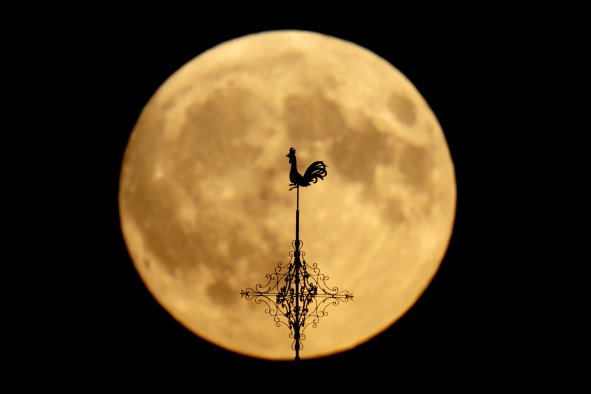Stargazers hoping to catch a glimpse of some shooting stars are in luck in the coming days, as the Orionid meteor shower is forecast to peak next week.
This meteor shower—caused by Halley's Comet—is expected to be visible between September 26 and November 22 this year, but will peak in activity in the early hours of October 21.
Therefore, the nights of October 20 and 21 are the best opportunities to spot these exceptionally fast meteors soaring through the night sky in what is described by NASA as "one of the most beautiful showers of the year."
How To Watch the Orionid Meteor Shower
The Orionids are named after their radiant, the constellation Orion, which is where the meteors appear to originate from in the sky. This constellation is highest in the sky at around 2 a.m., and is visible in both the Southern and Northern Hemispheres. From the U.S., Orion will appear in the southwestern sky.
However, the meteors only seem to come from the direction of Orion, and can appear anywhere in the sky during the shower. In fact, looking about 45 to 90 degrees away from Orion will reveal longer and more exciting meteors, NASA advises.
Best viewing will be the hours between midnight and dawn, with between 10 and 20 meteors an hour possible during the peak under ideal conditions.
Clear skies, minimal light pollution, and patience are key to getting the best experience of the meteor shower.
"Find an area well away from the city or street lights. Come prepared with a sleeping bag, blanket, or lawn chair. Lie flat on your back with your feet facing southeast if you are in the Northern Hemisphere or northeast if you are in the Southern Hemisphere, and look up, taking in as much of the sky as possible," NASA explains. "In less than 30 minutes in the dark, your eyes will adapt and you will begin to see meteors."
Unfortunately, this year the moon may stymie attempts to see the Orionids. With the full moon falling on October 17, the moon will be around 80 percent illuminated during the shower's peak, which will create light pollution that may make it harder to spot the meteors.
Additionally, the moon is expected to rise between 8 and 10 p.m. across the U.S. on the nights of October 20 and 21, and stay in the sky all night.
Orionid meteors are known for their extremely fast speed, soaring through the sky at about 41 miles per second. They can produce bright fireballs and often leave glowing trails.
What Causes the Orionid Meteor Shower
The Orionids are caused by the famous Halley's Comet, also known as comet 1P/Halley, which also causes the Eta Aquariids meteor shower in May.
Halley's Comet follows an elliptical orbit around the sun, and during its journey, it passes close to the sun and Earth. Every time the comet gets near the sun, the heat causes it to release gases and dust, creating a trail of debris gets scattered along its orbit.
Twice a year, Earth's orbit crosses this debris field, and the particles enter Earth's atmosphere and burn up due to friction with the air as a meteor shower. In October, this causes the Orionid meteor shower, while in May, the same debris trail results in the Eta Aquariid meteor shower.
Halley's Comet takes about 76 years to orbit the sun. It last appeared in the inner solar system in 1986, and its next appearance will be in 2061. While Halley's Comet has been observed and recorded for millennia, it was named after the British astronomer Edmond Halley, who correctly predicted its return in 1758. He realized that the comet sightings in 1531, 1607, and 1682 were of the same comet, and calculated its orbit.
Do you have a tip on a science story that Newsweek should be covering? Do you have a question about the Orionid meteor shower? Let us know via science@newsweek.com.
Disclaimer: The copyright of this article belongs to the original author. Reposting this article is solely for the purpose of information dissemination and does not constitute any investment advice. If there is any infringement, please contact us immediately. We will make corrections or deletions as necessary. Thank you.



